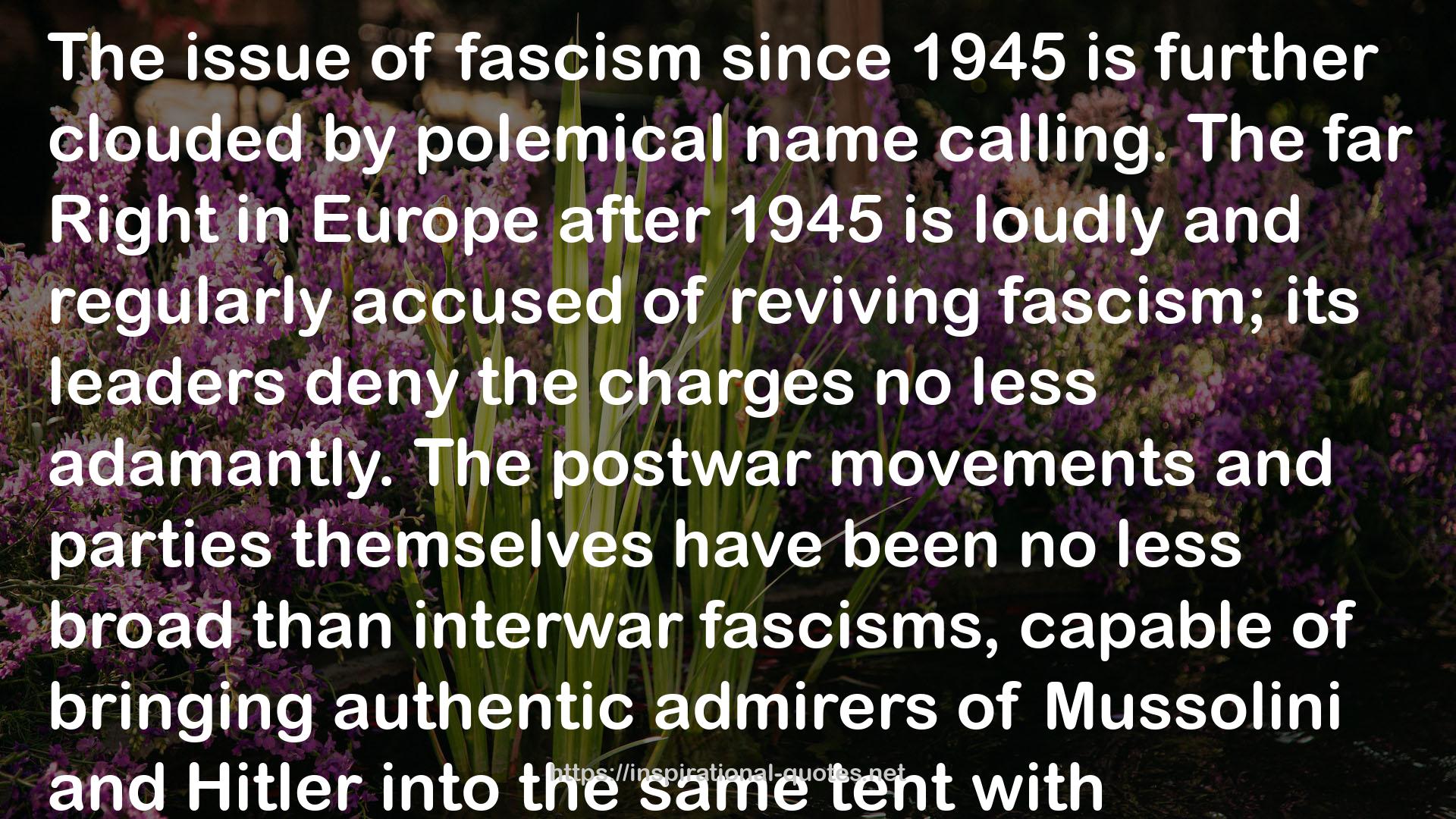" The issue of fascism since 1945 is further clouded by polemical name calling. The far Right in Europe after 1945 is loudly and regularly accused of reviving fascism; its leaders deny the charges no less adamantly. The postwar movements and parties themselves have been no less broad than interwar fascisms, capable of bringing authentic admirers of Mussolini and Hitler into the same tent with one-issue voters and floating protesters. Their leaders have become adept at presenting a moderate face to the general public while privately welcoming outright fascist sympathizers with coded words about accepting one’s history, restoring national pride, or recognizing the valor of combatants on all sides.
The inoculation of most Europeans against the original fascism by its public shaming in 1945 is inherently temporary. The taboos of 1945 have inevitably faded with the disappearance of the eyewitness generation. In any event, a fascism of the future—an emergency response to some still unimagined crisis—need not resemble classical fascism perfectly in its outward signs and symbols. Some future movement that would “give up free institutions” in order to perform the same functions of mass mobilization for the reunification, purification, and regeneration of some troubled group would undoubtedly call itself something else and draw on fresh symbols. That would not make it any less dangerous.
For example, while a new fascism would necessarily diabolize some enemy, both internal and external, the enemy would not necessarily be Jews. An authentically popular American fascism would be pious, antiblack, and, since September 11, 2001, anti-Islamic as well; in western Europe, secular and, these days, more likely anti-Islamic than anti-Semitic; in Russia and eastern Europe, religious, anti-Semitic, Slavophile, and anti-Western. New fascisms would probably prefer the mainstream patriotic dress of their own place and time to alien swastikas or fasces. The British moralist George Orwell noted in the 1930s that an authentic British fascism would come reassuringly clad in sober English dress. There is no sartorial litmus test for fascism. "
― Robert O. Paxton , The Anatomy of Fascism
